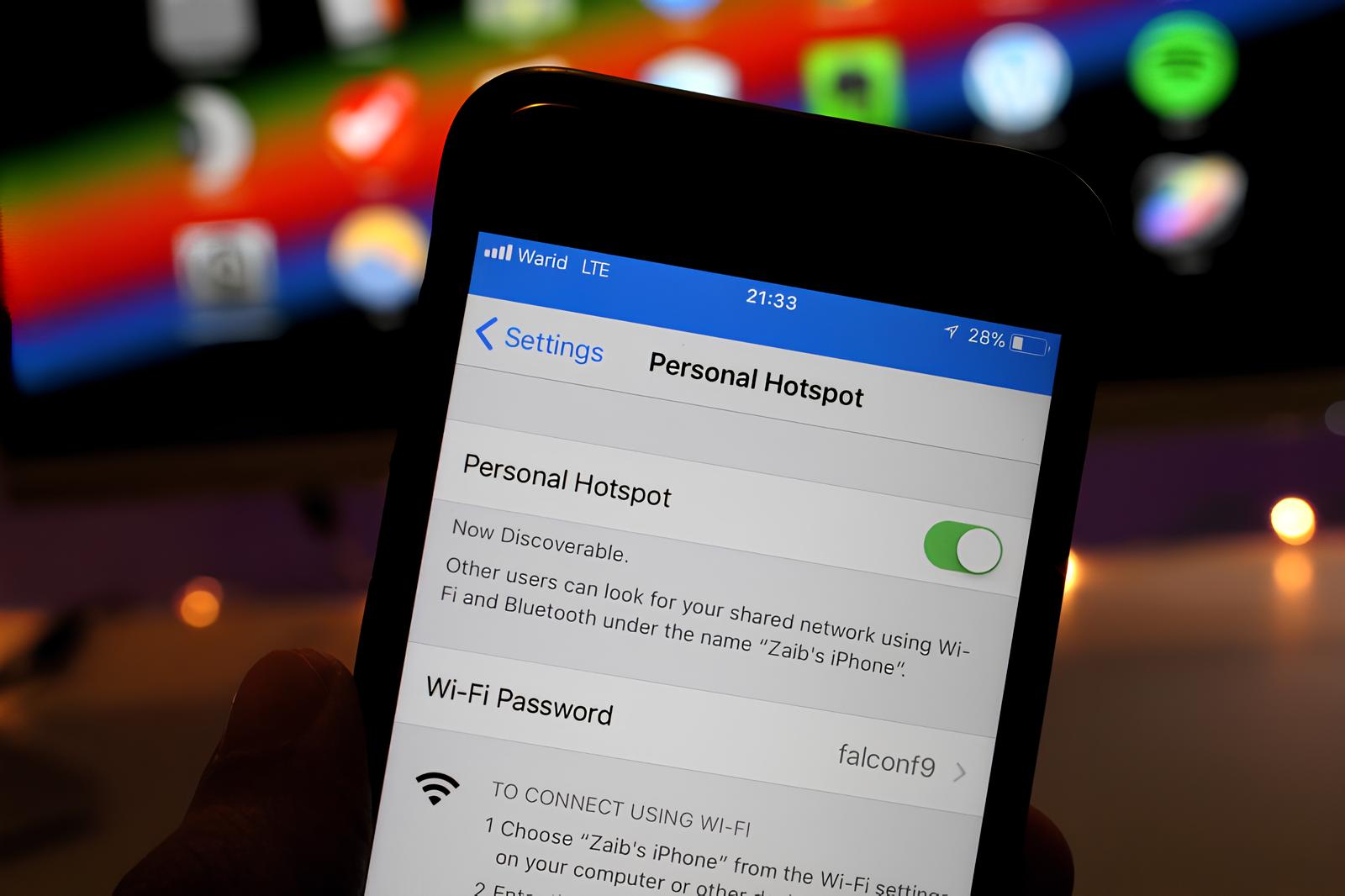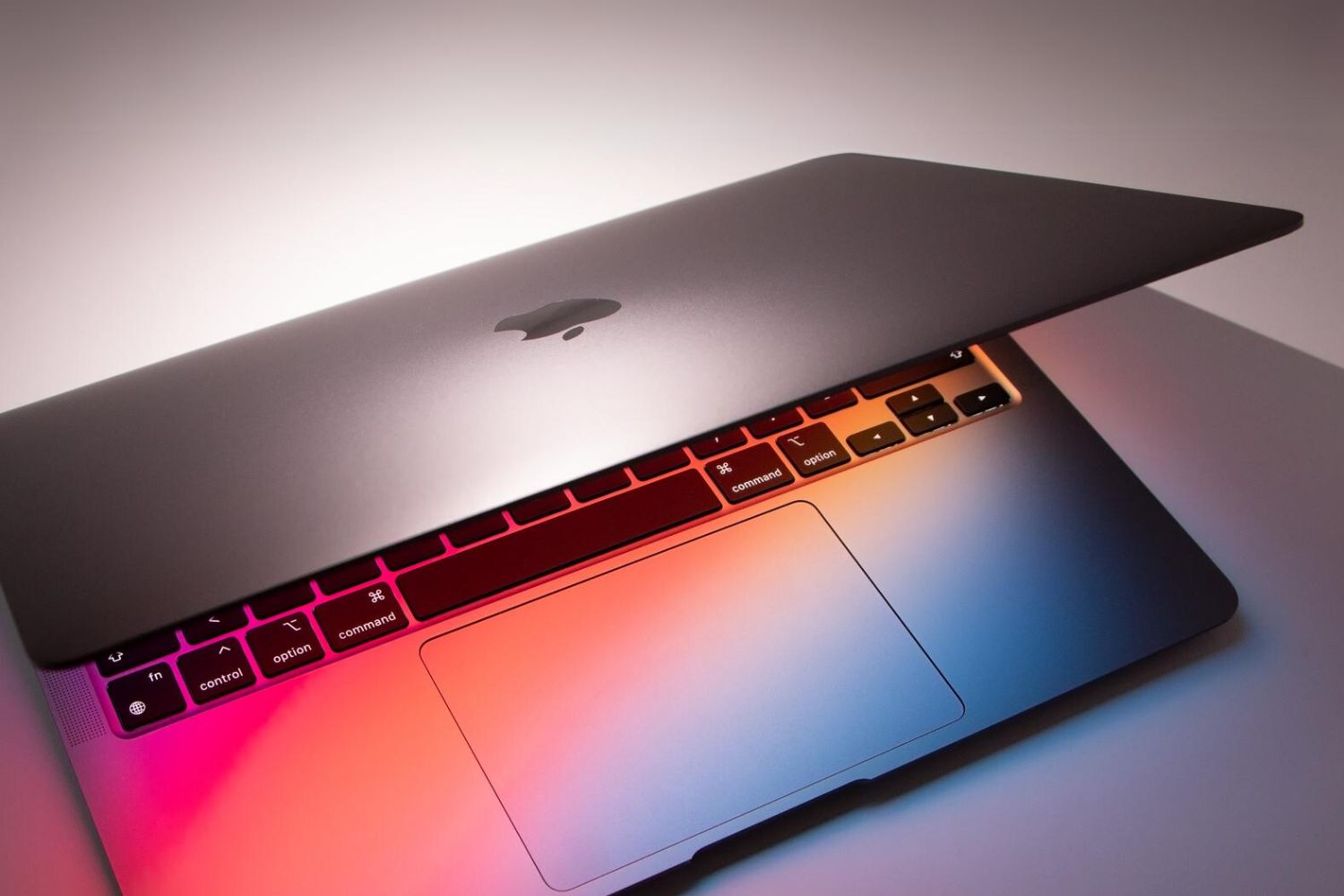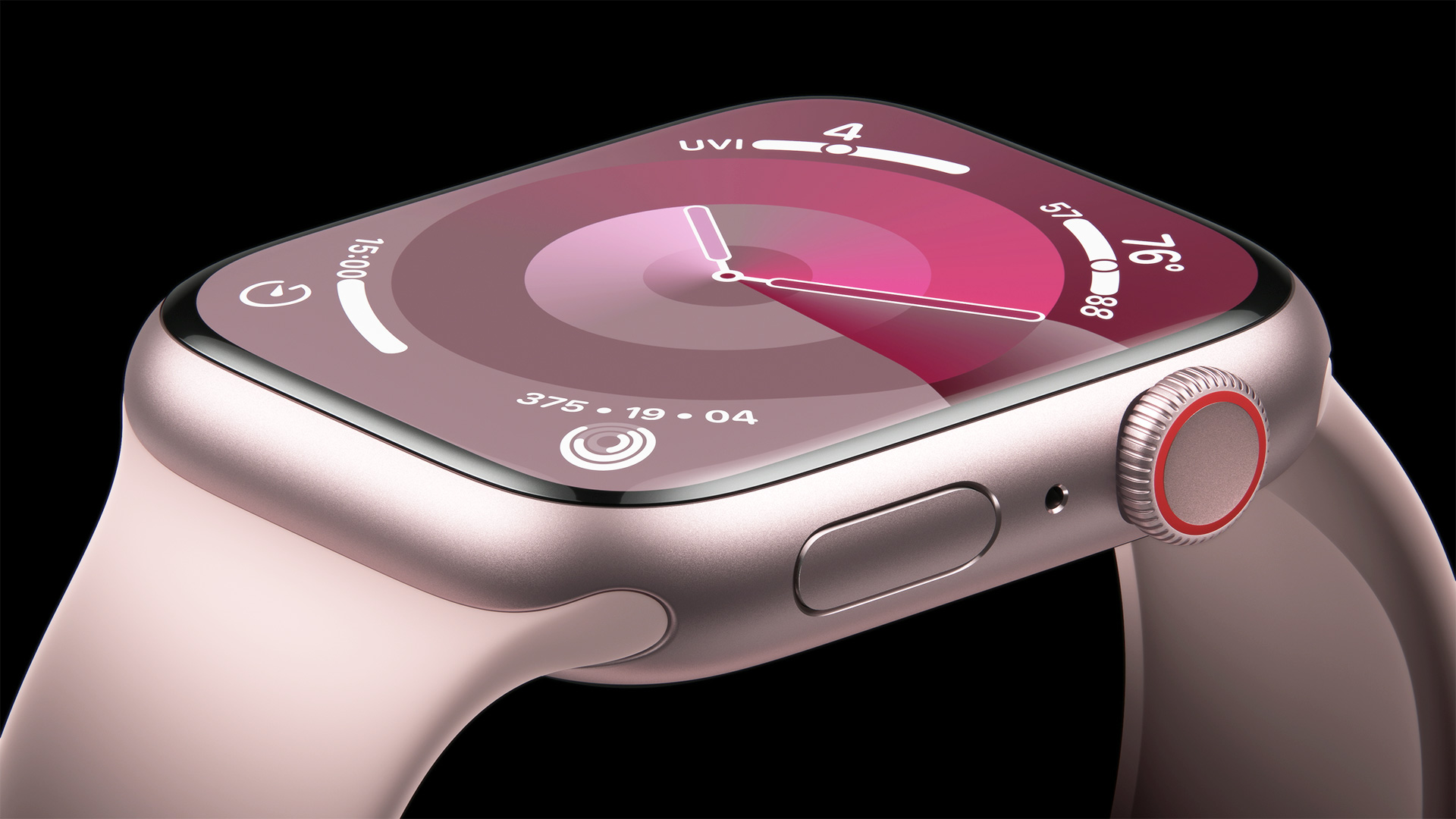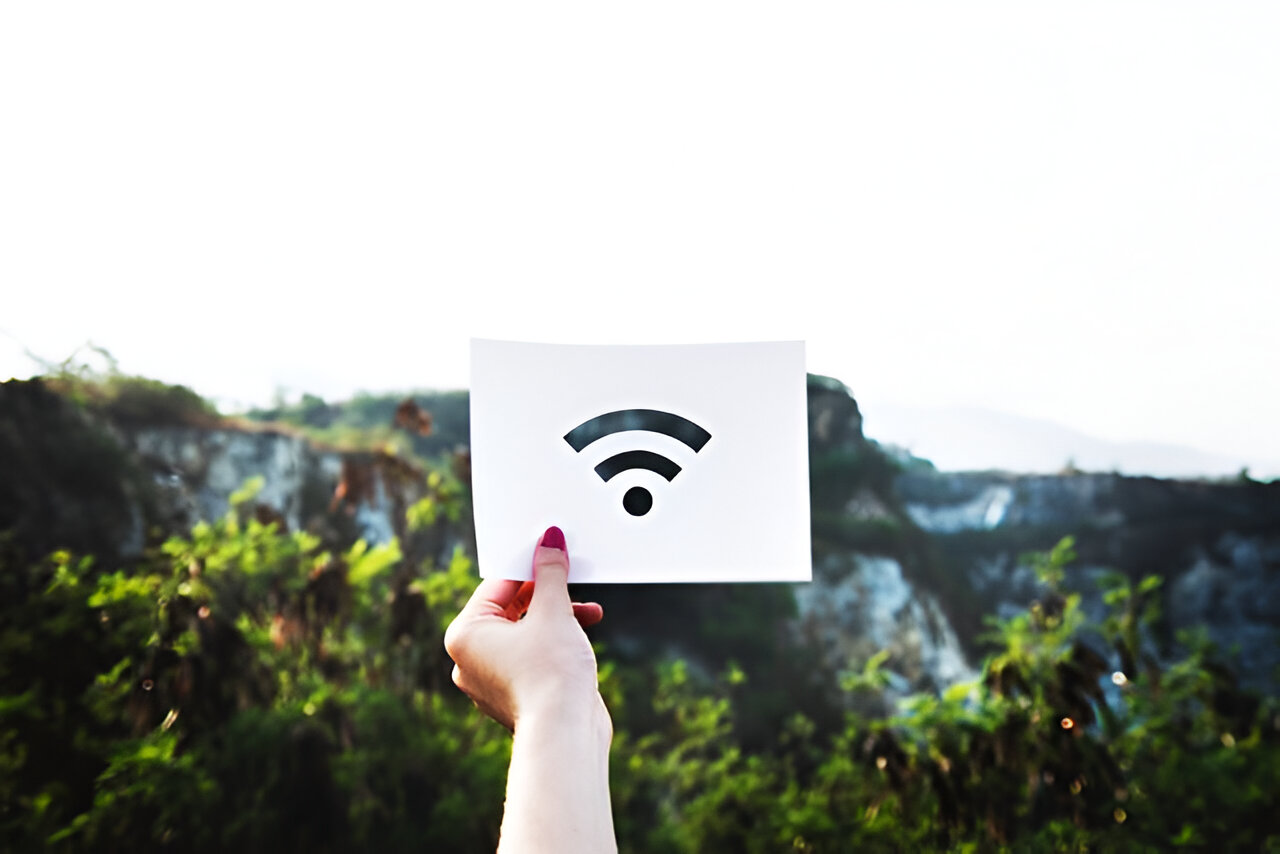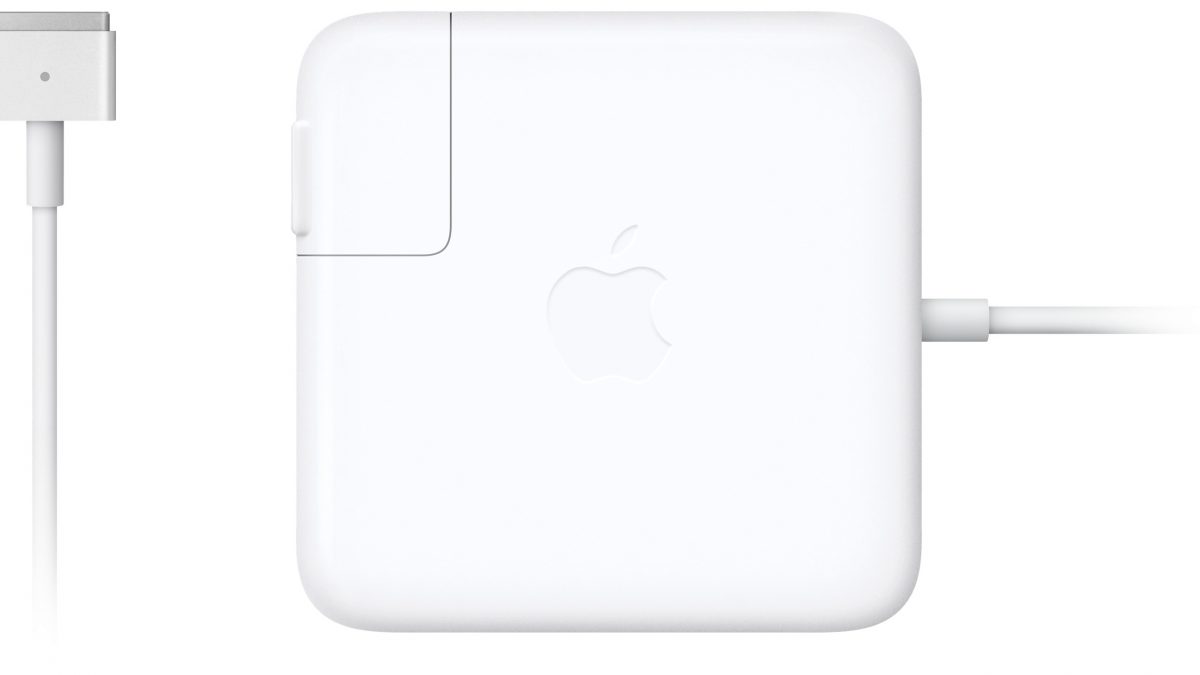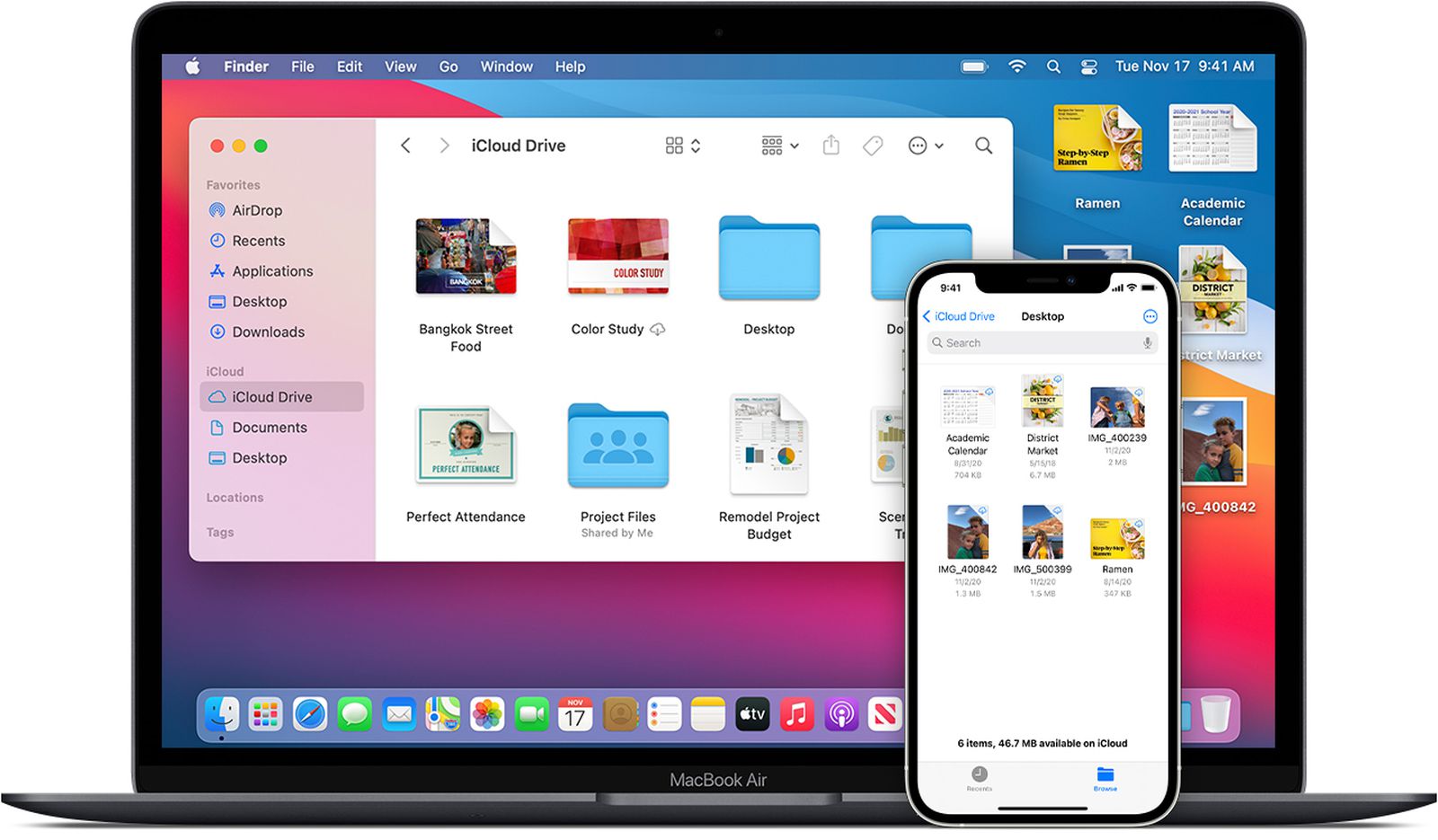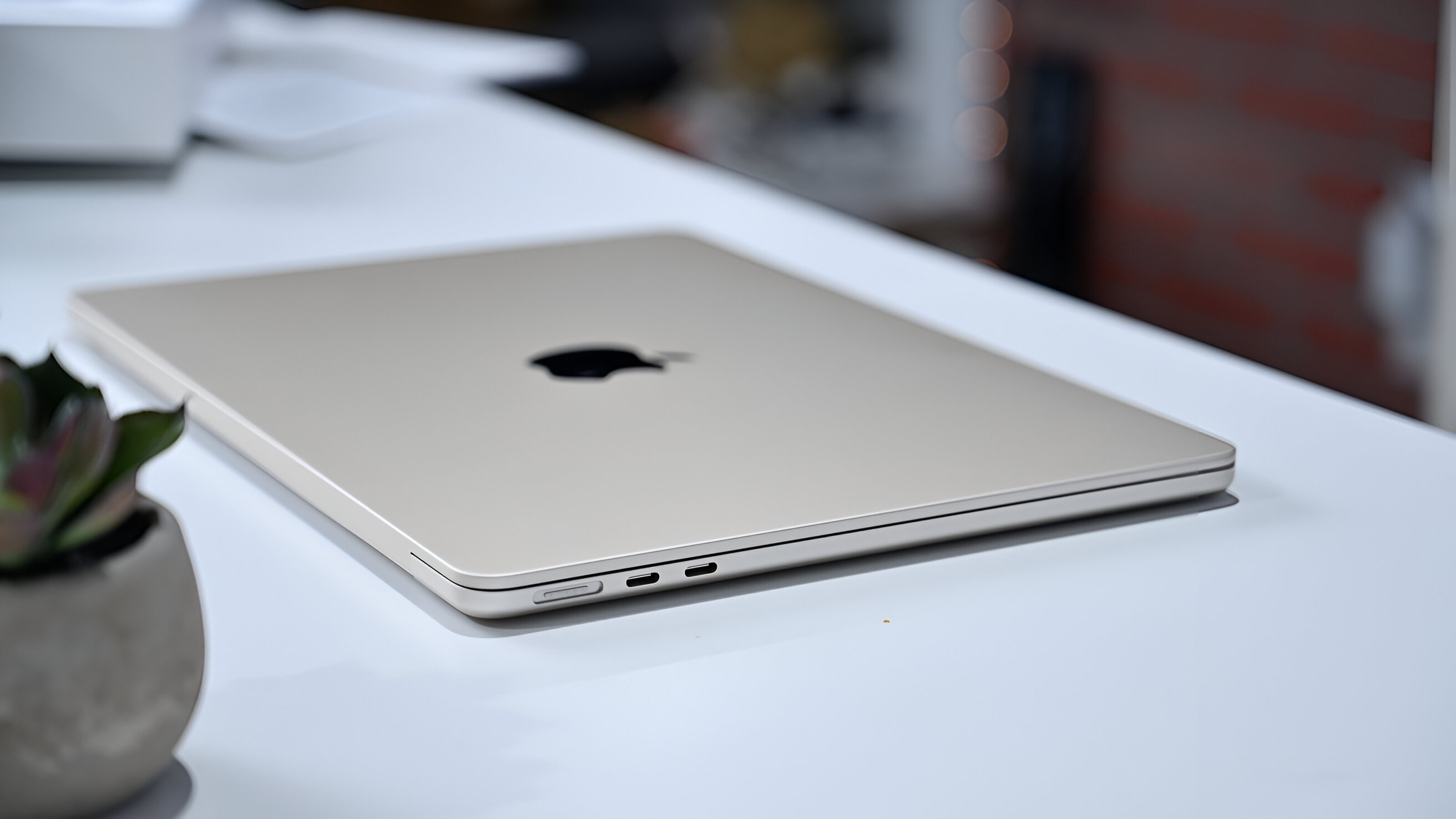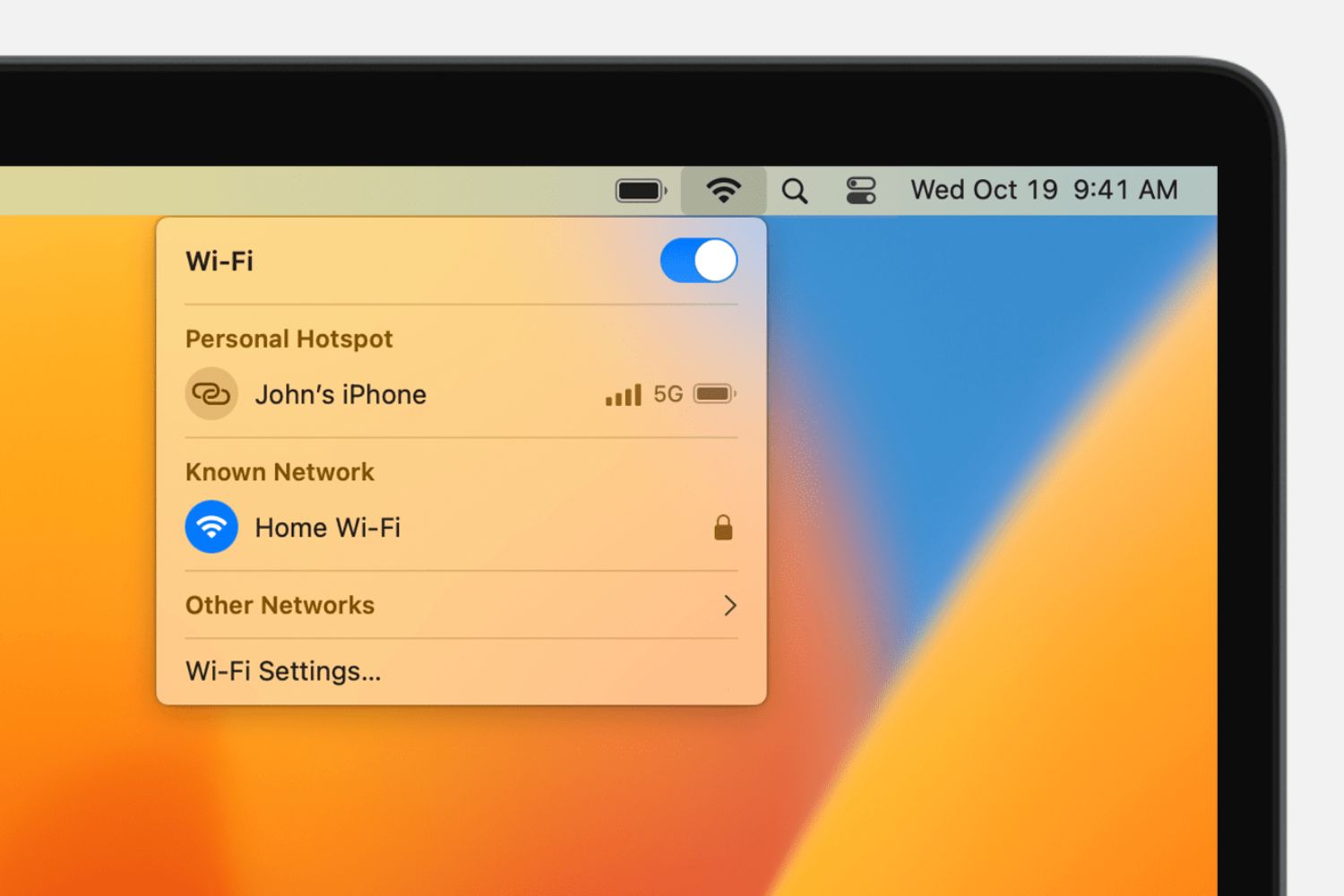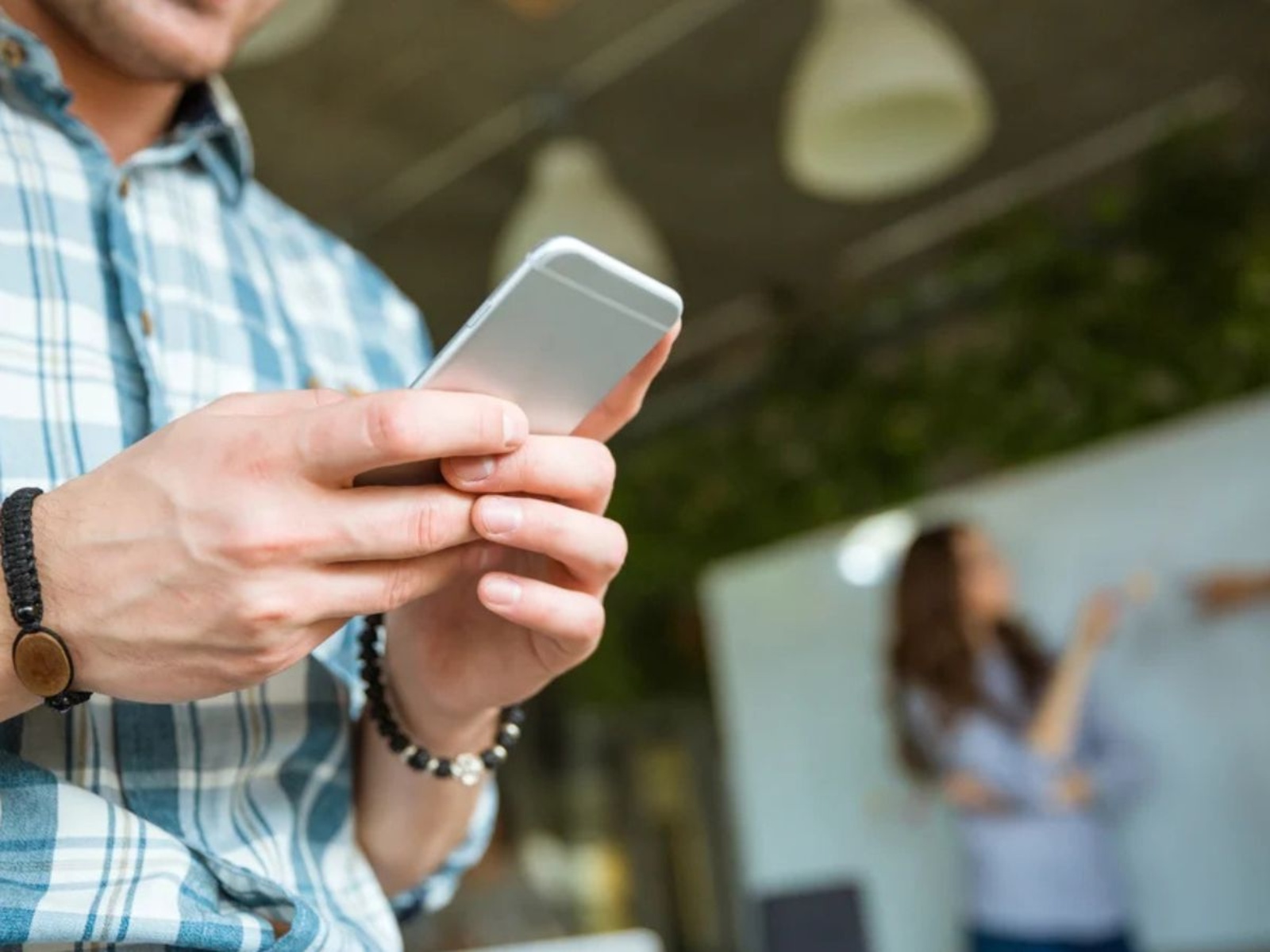Introduction
In today's fast-paced digital world, staying connected is essential for both work and leisure. Whether you're traveling, working remotely, or simply in need of a reliable internet connection, leveraging your iPhone's personal hotspot feature to connect your MacBook can be a game-changer. By turning your iPhone into a mobile Wi-Fi hotspot, you can access the internet on your MacBook even when traditional Wi-Fi networks are unavailable.
In this comprehensive guide, we'll walk you through the step-by-step process of connecting your MacBook to your iPhone's personal hotspot. This convenient feature allows you to share your iPhone's cellular data connection with your MacBook, ensuring seamless internet access on the go. Whether you're a digital nomad, a frequent traveler, or simply seeking a backup internet option, mastering this connection process can prove invaluable in various scenarios.
So, if you find yourself in a situation where a Wi-Fi network is out of reach but you have cellular data on your iPhone, fear not! By the end of this guide, you'll be well-equipped to harness the power of your iPhone's personal hotspot and establish a reliable connection with your MacBook. Let's dive into the steps and troubleshooting tips to ensure a smooth and hassle-free experience.
Step 1: Enable Personal Hotspot on iPhone
Enabling the personal hotspot feature on your iPhone is the first crucial step in establishing a wireless connection with your MacBook. This feature essentially transforms your iPhone into a portable Wi-Fi hotspot, allowing other devices, such as your MacBook, to connect and utilize its cellular data connection.
Here's a detailed walkthrough of how to enable the personal hotspot on your iPhone:
-
Accessing Settings: Begin by unlocking your iPhone and navigating to the "Settings" app, which is represented by a gear icon on your home screen.
-
Selecting Personal Hotspot: Within the "Settings" app, tap on "Personal Hotspot." This option is typically located near the top of the settings menu, denoted by a smartphone icon with signal waves emanating from it.
-
Activating Personal Hotspot: Upon selecting "Personal Hotspot," you will be prompted to activate the feature. Toggle the switch to turn on the personal hotspot. You may also have the option to set a Wi-Fi password for added security.
-
Connecting Options: After activating the personal hotspot, your iPhone will display instructions for connecting other devices. This typically includes connecting via Wi-Fi, Bluetooth, or USB. For connecting your MacBook, we'll focus on the Wi-Fi option.
-
Note the Wi-Fi Network Name and Password: Your iPhone will display the name of the Wi-Fi network (also known as the SSID) and the password required to connect to the personal hotspot. Make a note of these details as you will need them to establish the connection on your MacBook.
By following these steps, you have successfully enabled the personal hotspot feature on your iPhone, paving the way for your MacBook to connect and utilize the iPhone's cellular data connection. With the personal hotspot activated, you're now ready to proceed to the next step, which involves connecting your MacBook to the iPhone hotspot.
Next, we'll delve into the seamless process of connecting your MacBook to the iPhone's personal hotspot, ensuring that you can harness the power of your iPhone's cellular data for a reliable internet connection on your MacBook.
Step 2: Connect MacBook to iPhone Hotspot
After activating the personal hotspot on your iPhone, the next step is to connect your MacBook to the iPhone hotspot. This process allows your MacBook to utilize the cellular data connection from your iPhone, ensuring seamless internet access when traditional Wi-Fi networks are unavailable. Here's a detailed guide on how to establish this connection:
-
Accessing Wi-Fi Settings: Begin by opening the "System Preferences" on your MacBook. You can do this by clicking on the Apple logo in the top-left corner of the screen and selecting "System Preferences" from the dropdown menu.
-
Selecting Network Preferences: Within "System Preferences," locate and click on the "Network" icon. This will open the network preferences window, where you can manage your MacBook's network connections.
-
Choosing iPhone Hotspot: In the network preferences window, you should see a list of available network connections on the left-hand side. Look for the option labeled "iPhone Hotspot" or the name of your iPhone's personal hotspot network. Click on it to select the iPhone hotspot as the network to which your MacBook will connect.
-
Entering Wi-Fi Password: Once you've selected the iPhone hotspot network, you will be prompted to enter the Wi-Fi password. This is the password you noted down when you activated the personal hotspot on your iPhone. Enter the password and click "Join" to initiate the connection process.
-
Establishing Connection: After entering the correct password, your MacBook will attempt to establish a connection with the iPhone hotspot. If the password is accurate and the signal strength is sufficient, your MacBook should successfully connect to the iPhone's personal hotspot.
-
Verifying Connection: To ensure that the connection is successful, look for the Wi-Fi icon in the menu bar at the top-right corner of your MacBook's screen. If the connection is established, you should see the Wi-Fi icon with signal strength bars, indicating that your MacBook is now connected to the iPhone hotspot.
By following these steps, you have successfully connected your MacBook to your iPhone's personal hotspot, enabling your MacBook to utilize the cellular data connection from your iPhone. With the connection established, you can now enjoy seamless internet access on your MacBook, leveraging the power of your iPhone's personal hotspot.
Next, we'll explore essential troubleshooting tips to address common issues that may arise when connecting your MacBook to the iPhone hotspot, ensuring a smooth and uninterrupted internet experience.
Step 3: Troubleshooting Tips
While connecting your MacBook to your iPhone's personal hotspot is typically a straightforward process, occasional issues may arise. Here are essential troubleshooting tips to address common challenges and ensure a seamless connection experience:
-
Check Wi-Fi and Cellular Signal: Begin by verifying that both your iPhone and MacBook have strong Wi-Fi and cellular signals. Weak signals can hinder the connection process, leading to intermittent or slow internet access. If the signals are weak, consider repositioning your devices to improve signal strength.
-
Restart Devices: Sometimes, a simple restart can resolve connectivity issues. Start by turning off the personal hotspot on your iPhone, then power off both your iPhone and MacBook. After a brief interval, power on your iPhone and wait for it to fully boot up. Once your iPhone is operational, turn on the personal hotspot again. Proceed to restart your MacBook and attempt to reconnect to the iPhone hotspot.
-
Update Software: Ensure that both your iPhone and MacBook are running the latest software versions. Outdated software can sometimes lead to compatibility issues and connectivity problems. Check for and install any available updates on both devices to optimize performance and address potential software-related issues.
-
Forget and Rejoin Network: On your MacBook, if you encounter persistent connection issues, consider forgetting the iPhone hotspot network and rejoining it. To do this, navigate to the Wi-Fi settings, select the iPhone hotspot network, and choose the option to forget the network. Afterward, rejoin the network by selecting it from the available Wi-Fi networks and entering the password when prompted.
-
Reset Network Settings: If connectivity problems persist, you can reset the network settings on your iPhone. This action clears stored network configurations and can resolve underlying network-related issues. To reset network settings on your iPhone, go to "Settings," select "General," and then choose "Reset." From the reset options, tap on "Reset Network Settings" and follow the on-screen prompts.
-
Contact Carrier Support: In cases where persistent connectivity issues are encountered, reaching out to your cellular carrier's support team can provide valuable assistance. They can offer insights into network coverage, troubleshoot specific account-related issues, and provide guidance on optimizing your iPhone's personal hotspot functionality.
By implementing these troubleshooting tips, you can effectively address common connectivity issues and ensure a reliable connection between your MacBook and your iPhone's personal hotspot. With a proactive approach to resolving potential challenges, you can enjoy uninterrupted internet access and leverage the convenience of your iPhone's personal hotspot for your MacBook.
Conclusion
In conclusion, mastering the process of connecting your MacBook to your iPhone's personal hotspot opens up a world of possibilities for seamless internet access, especially in situations where traditional Wi-Fi networks are unavailable. By following the step-by-step guide outlined in this article, you've gained the knowledge and skills to leverage your iPhone's cellular data connection and ensure uninterrupted connectivity for your MacBook.
The ability to enable the personal hotspot feature on your iPhone and establish a reliable connection with your MacBook empowers you to stay productive, connected, and entertained, regardless of your location. Whether you're working remotely, traveling, or simply seeking a backup internet option, the flexibility offered by the iPhone hotspot connectivity is invaluable.
By enabling the personal hotspot on your iPhone, you've effectively transformed it into a portable Wi-Fi hotspot, allowing your MacBook to tap into its cellular data connection. This capability provides a lifeline for accessing online resources, staying connected with colleagues and friends, and engaging in various online activities, all without the constraints of traditional Wi-Fi network availability.
Furthermore, the troubleshooting tips provided in this guide equip you with the tools to address common connectivity issues that may arise when connecting your MacBook to the iPhone hotspot. With the ability to troubleshoot and resolve potential challenges, you can maintain a smooth and uninterrupted internet experience, ensuring that you make the most of your iPhone's personal hotspot functionality.
In essence, the seamless connection between your MacBook and your iPhone's personal hotspot exemplifies the convergence of technology and convenience, enabling you to harness the power of your iPhone's cellular data for a myriad of online endeavors. Whether it's attending virtual meetings, streaming content, or staying connected with loved ones, the ability to establish this connection enhances your digital lifestyle and reinforces the versatility of your Apple devices.
As you embark on your journey with this newfound knowledge, remember that the connection between your MacBook and your iPhone's personal hotspot serves as a testament to the innovative capabilities of modern technology. Embrace the convenience, stay connected, and continue to explore the boundless opportunities made possible by your iPhone's personal hotspot feature.







